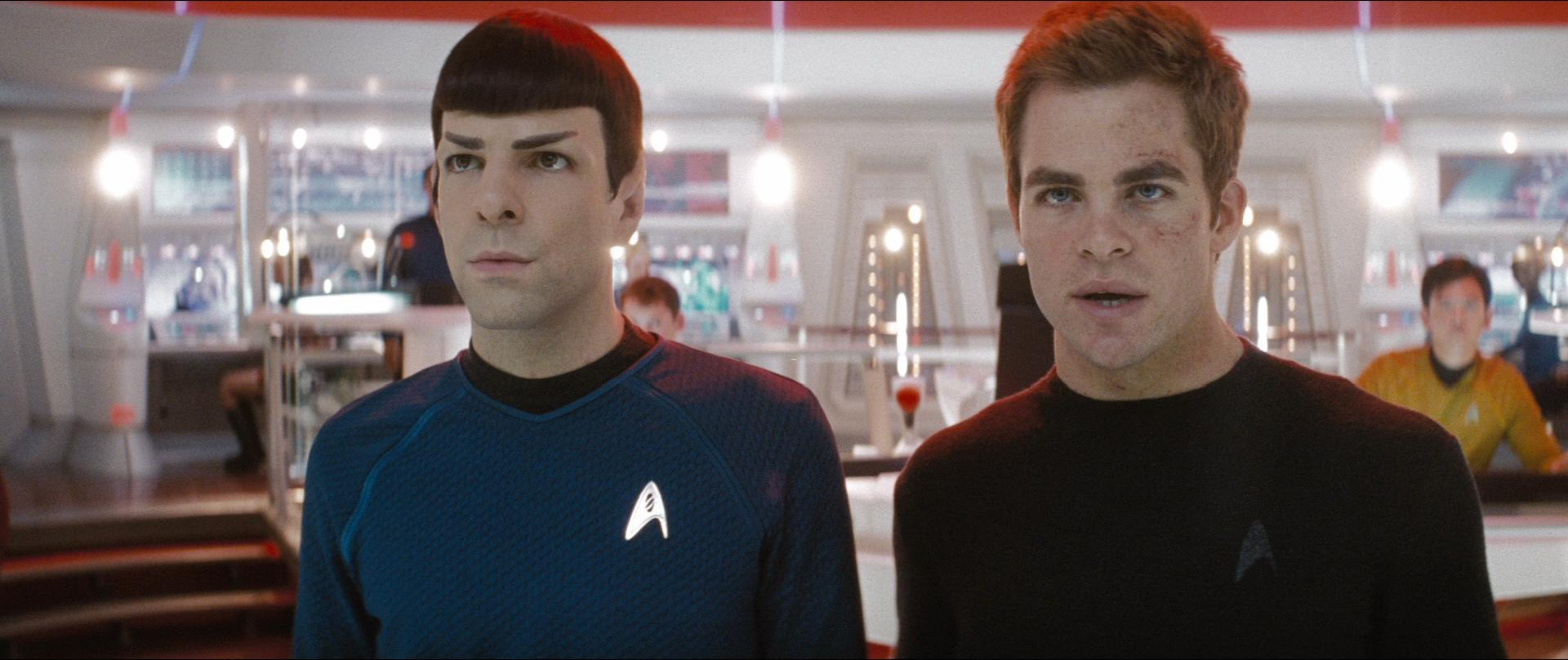
A weird-looking Romulan vessel appears in what we learn later is the early 23rd century, looking for someone named “Ambassador Spock.” The ship attacks a Starfleet vessel and later destroys it while one of its officers stays behind and sacrifices himself to buy the survivors time to escape. That officer is George Kirk (Chris Hemsworth, Thor), and his wife Winona (Jennifer Morrison, that one doctor from “House”) escapes and gives birth to a child — James Tiberius — on a shuttle. Star Trek is, now, reset and rebooted.
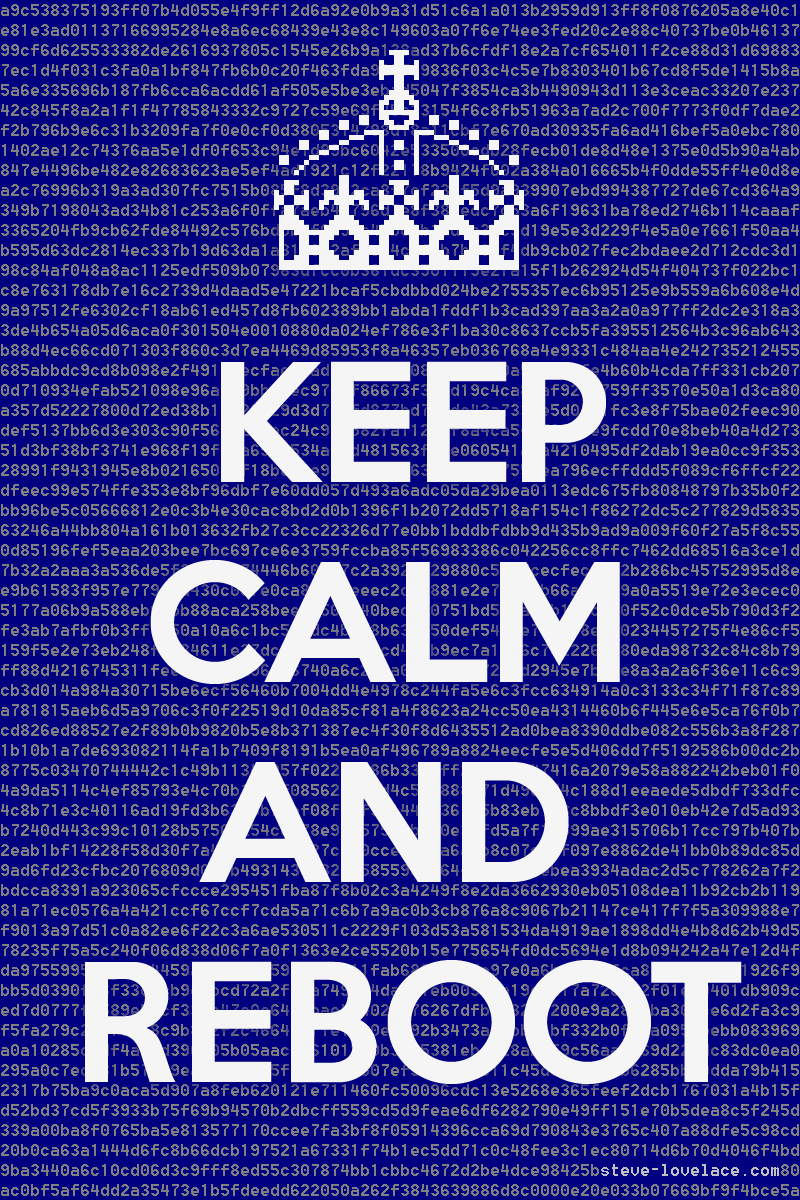
Fast-forward 20-some years and James Kirk (Chris Pine) is a troubled dude getting in bar fights with Starfleet cadets. A Starfleet captain, Christopher Pike (Bruce Greenwood), comes upon Kirk, figures out who his farther was and encourages Kirk to join Starfleet. Three years later, Kirk is about to graduate from Starfleet Academy and goes with the just-launched Enterprise, along with Pike, Commander Spock (Zachary Quinto) and the rest of the gang from TOS, minus a certain Scottsman. Vulcan is under attack by the same weird-looking ship from earlier, and it destroys Vulcan(!) and all but a handful of its people. With Pike imprisoned on the Romulan ship and interrogated by Captain Nero (Eric Bana) Spock takes command and puts Kirk off the ship on a nearby planet, where he meets … original Spock (Leonard Nimoy), whom Nero put on the planet so he could watch Vulcan’s destruction. Turns out Nero is mad at Spock because Spock’s plan to save Romulus from a supernova in the prime reality failed. Nero then chased Spock back in time (or something). Prime Spock and Kirk head to a Starfleet outpost on the planet staffed by Montgomery Scott (Simon Pegg) who’s able to beam himself and Kirk onto the Enterprise, despite the great distance. Kirk and Spock work together to stop Nero from doing to Earth what he did to Vulcan, destroying Nero’s ship after saving Pike. Kirk is then given the Enterprise and Spock becomes his first officer, and the Enterprise’s mission begins anew.
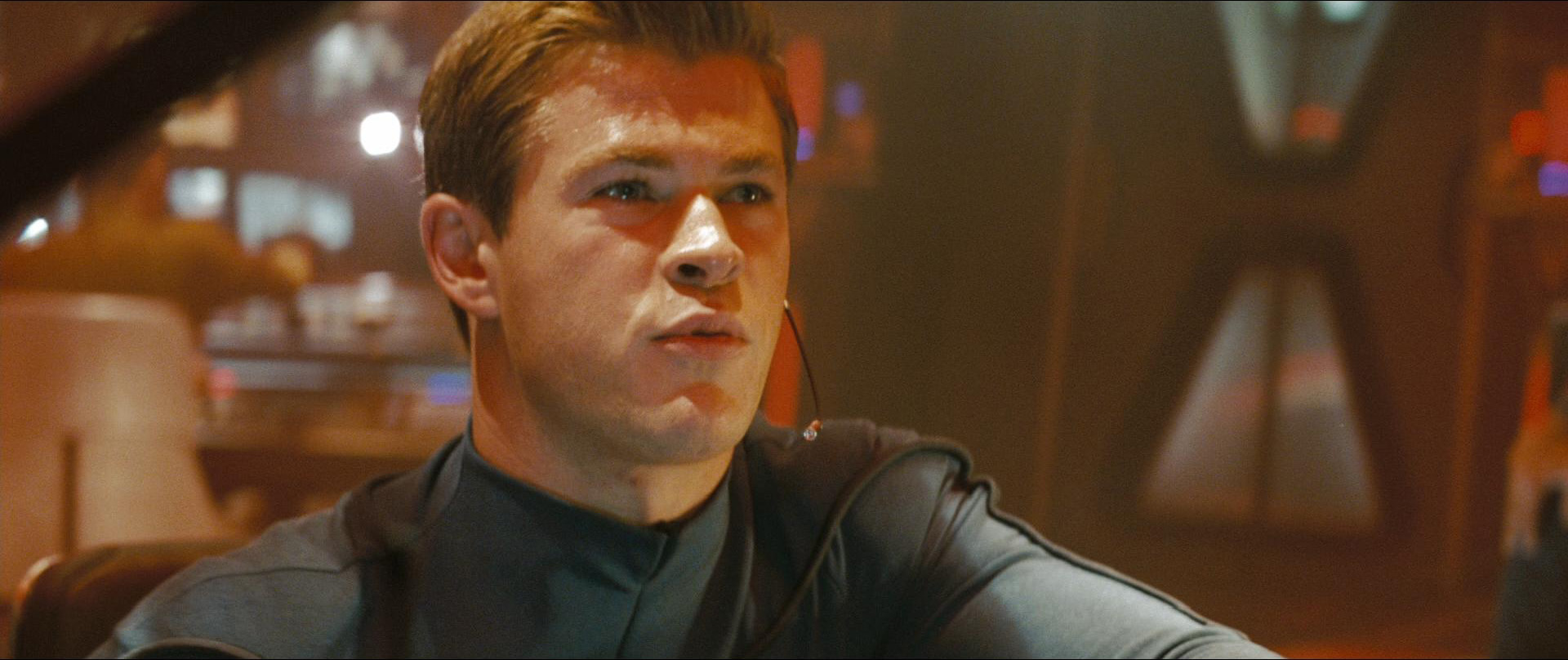
Why it’s important
Well, we learn a bit more about what happened in our prime reality — Romulus was destroyed, Spock was still around to help, etc. — possibly because of his involvement with the Romulans way back in TNG, though that’s never explained. But, really, this is a movie about resetting the Star Trek universe while maintaining much of what we know and love.
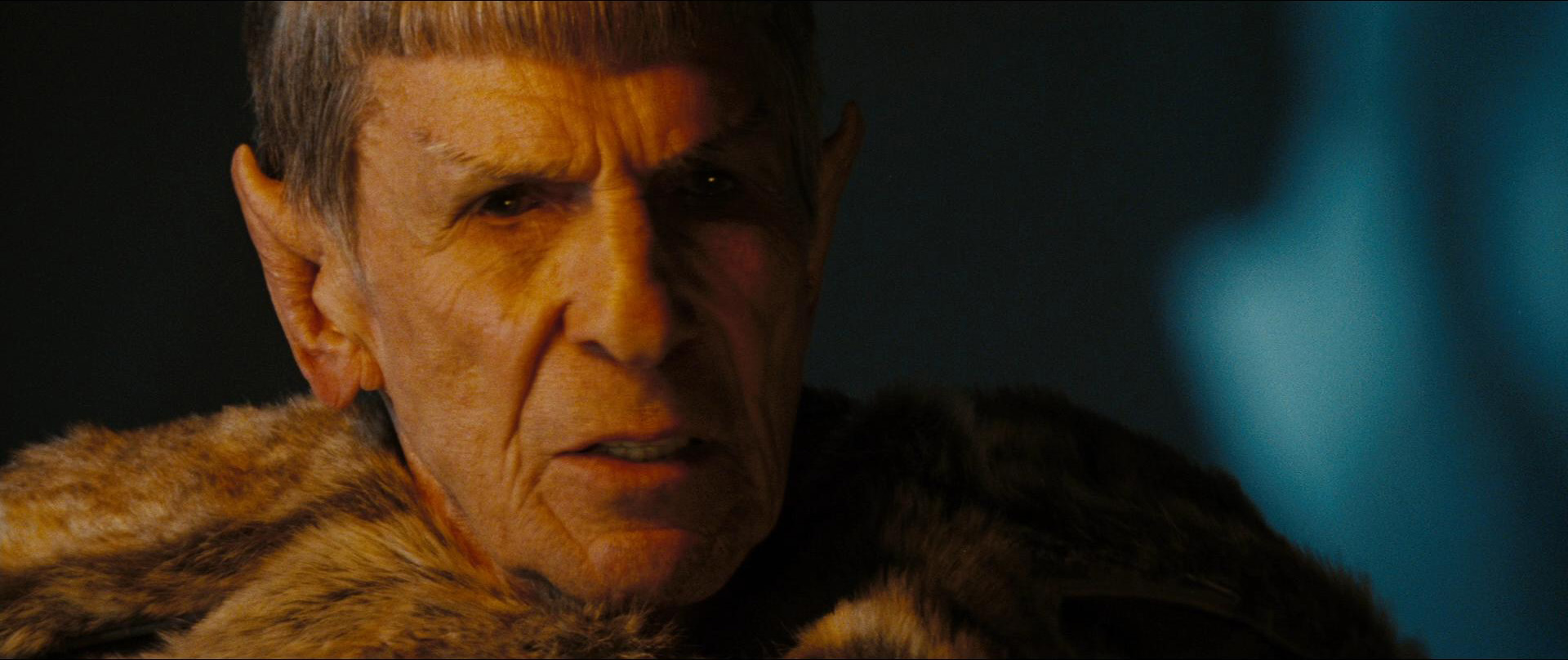
And, frankly, as a concept and as execution, it mostly works. If you’re going to reboot Star Trek, well, you’d better damn well reboot it. So, hats off to J.J. Abrams and his team for going all in and having a time-travel reset to address many of the inconsistencies that otherwise would have been called out by those darn Trek geeks. Bastards.
As a result, this was a good concept and a good film. What doesn’t work is more about bad logic on smaller points and some action-movie cliches — most of which were not necessitated by the reboot concept.
What doesn’t hold up
We’ll just say, right away, that the fact that Chris Pine looks different than William Shatner and Simon Pegg looks different than James Doohan, etc., etc., are conceits that we’ll shrug off. The technology stuff — particularly the Star Wars-esque/rough-around-the-edges inconsistencies we see, especially in the engineering section of the Enterprise — are harder to ignore. But we’ll do it, anyway. As we noted in our run through the prime reality, the fact that Archer’s Enterprise looked more advanced than Kirk’s was something that you just had to look past.
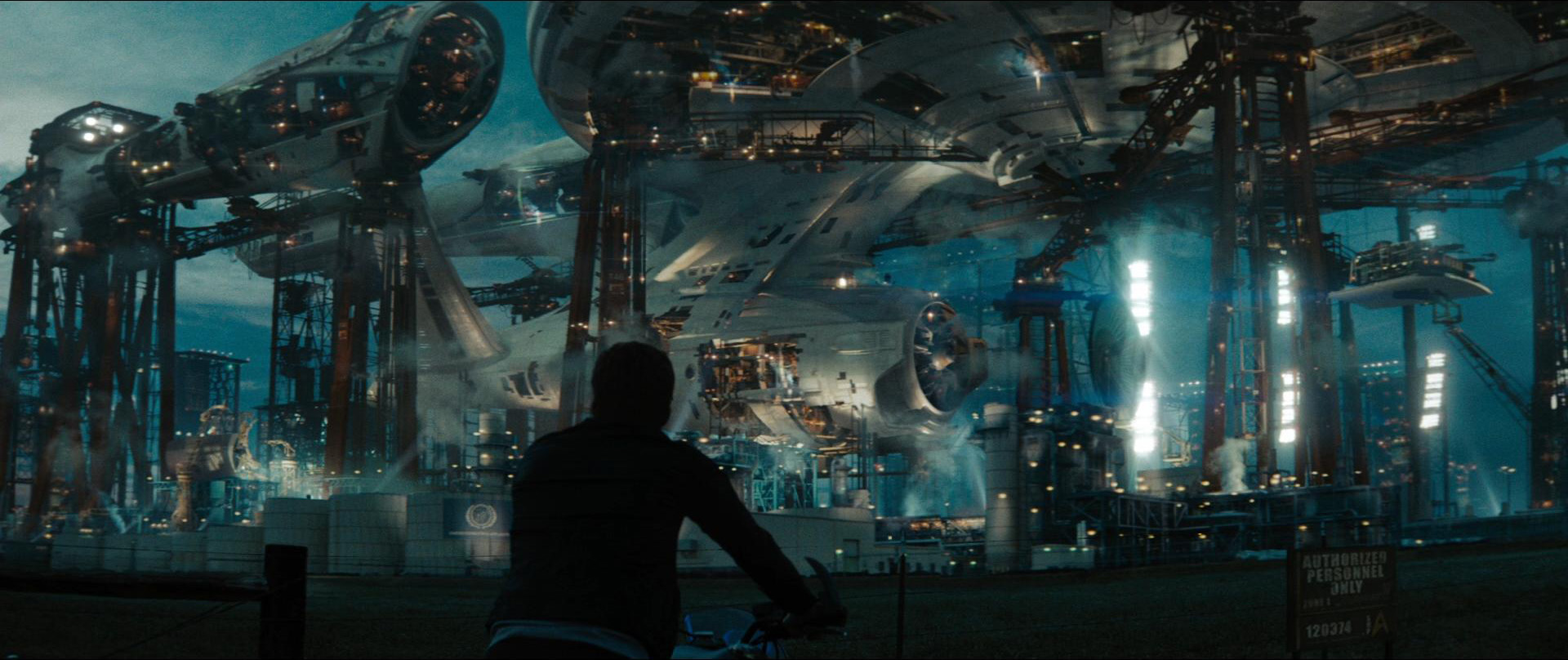
No, the worst parts about this movie and “Star Trek Into Darkness” stem from bad science, bad logic and too many runs down corridors filled with lens flares.
Somehow, going to warp in the rebooted movies is more like going to light speed in Star Wars, which is really strange, given that Star Trek always used journeys at warp as a way for the characters to take a beat. Beyond that, the idea that the supernova in the prime reality was going to “destroy the galaxy” — noted in a Nimoy voiceover — was just awful. A supernova might have affected a single solar system. The worst part about the line is that it didn’t need to be there, as the threat never materialized beyond Romulus.
Oh, and what’s the deal with Nero’s ship? It’s some sort of a drill, but it’s original purpose is never explained. He’s some sort of a miner … and the ship can destroy entire planets?
There are also some weird logical gaffes — the worst of which is the idea that Nero’s ship was apparently just sitting some place, waiting for Spock for 30 YEARS while Nero and his crew were in a Klingon prison. Even a line about how he and his men recovered the ship from its hiding place would have gone a long way. I know there were deleted scenes with Nero in the prison camp, but none I saw addressed this really major point. The ship should have been in Klingon control, right? And, if it was, why didn’t the Klingons tear it apart for its technology?
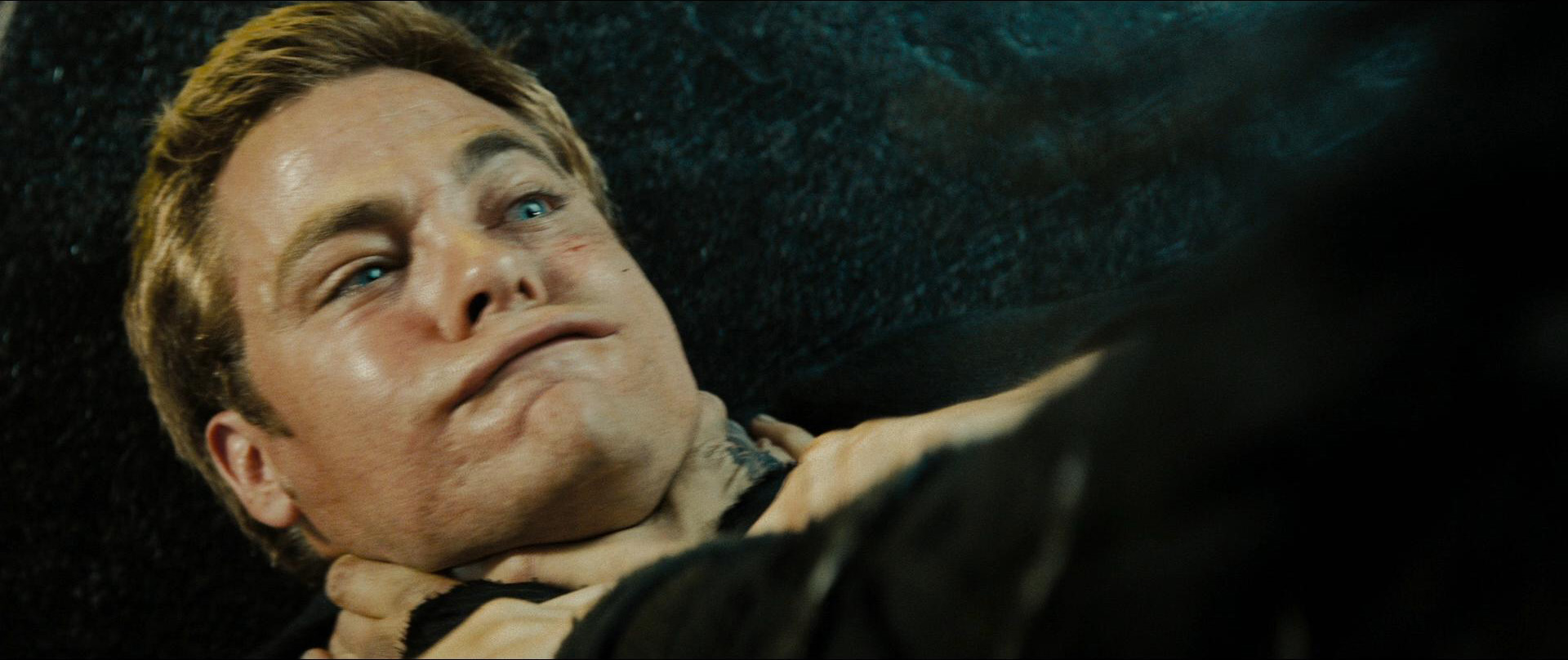
And, of course, the sprints through the Enterprise corridors and the lens flares were over the top. I don’t mind the idea that Trek movies have to be more action packed than Trek TV shows (they almost always were, pre-J.J.). But the action-movie cliches and faulty logic aren’t necessary or helpful.
Finally, the idea that Kirk would get promoted from cadet to captain at the end of the film — considering that he was nearly drummed out of Starfleet earlier — was a little too precious, even if it did set up the cool moment with Kirk taking command and Spock becoming first officer. This is sort of addressed in the next film when it’s clear Starfleet’s keeping a close eye on Kirk, but still. I’m not sure what would have made more sense, but I think the creators could have simply left it at Kirk being honored for his actions.
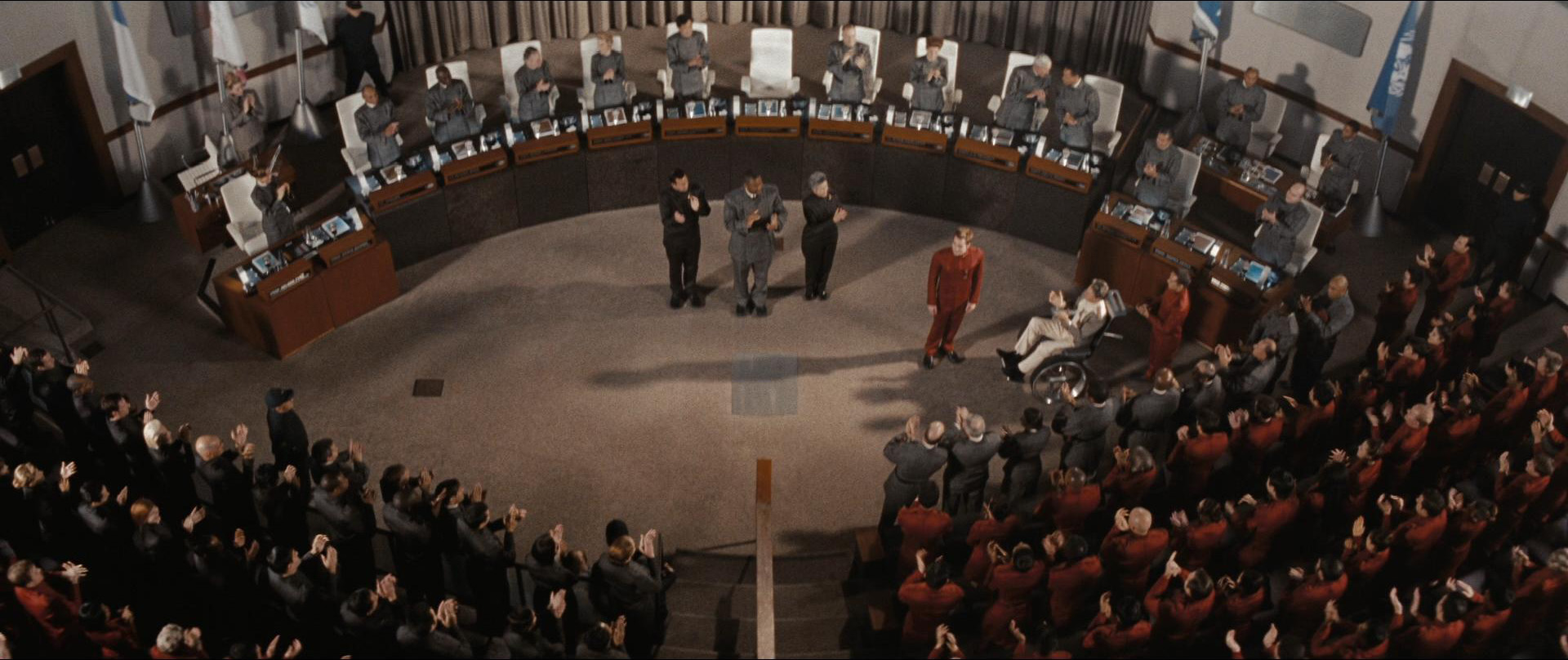
Final thoughts
Complaints aside, I really do like the reboot. Pine, Quinto, etc., were all well cast and the look and feel of the ship is pretty strong (though I don’t get the shipboard uniforms versus the uniforms on Earth). Occasionally, the characters and actors were too campy AND the film strays too much into back-story database territory, particularly for Spock. But … I suppose a reboot’s gotta be a reboot and the characters need to be explained to new audiences. Abrams did do well addressing continuity for the characters, even with the reboot.
Plus, bringing Nimoy back was a great bit of fan service. Now, someone is wondering why I’m not bringing up the time travel inconsistencies — i.e., how could prime Spock still even exist. Given that time travel went off the rails in second-generation Trek with effect predating cause, etc., I don’t think we have to hold J.J. and company to higher standards.
Coming next time …
The second rebooted movie. I guess in the J.J. Verse, the even-numbered films are the bad ones.

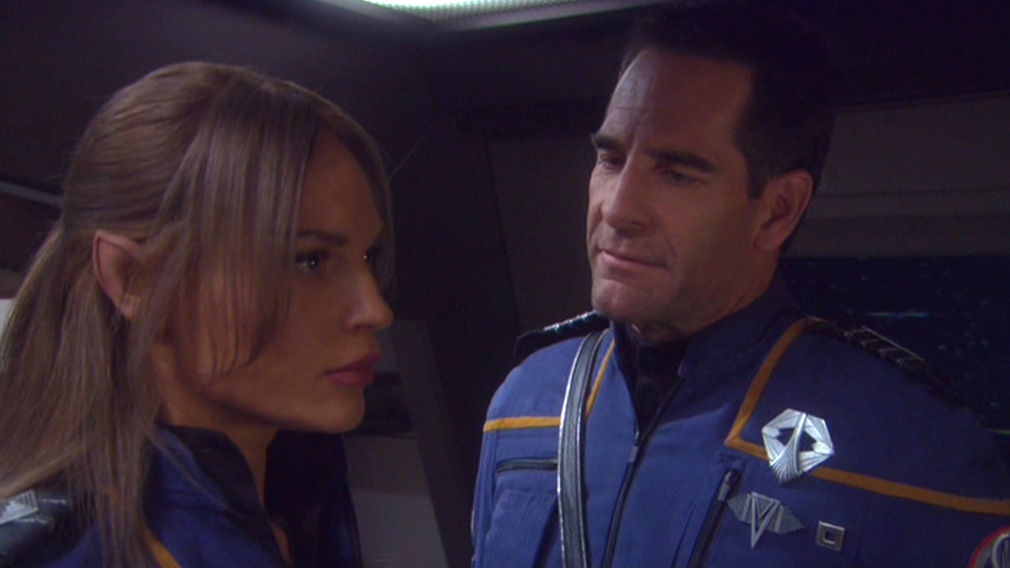
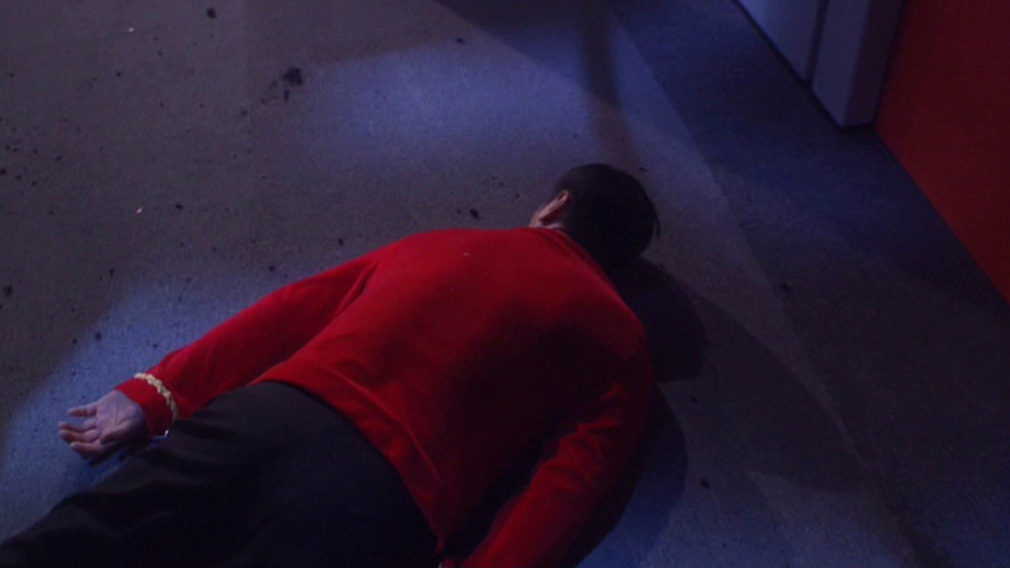
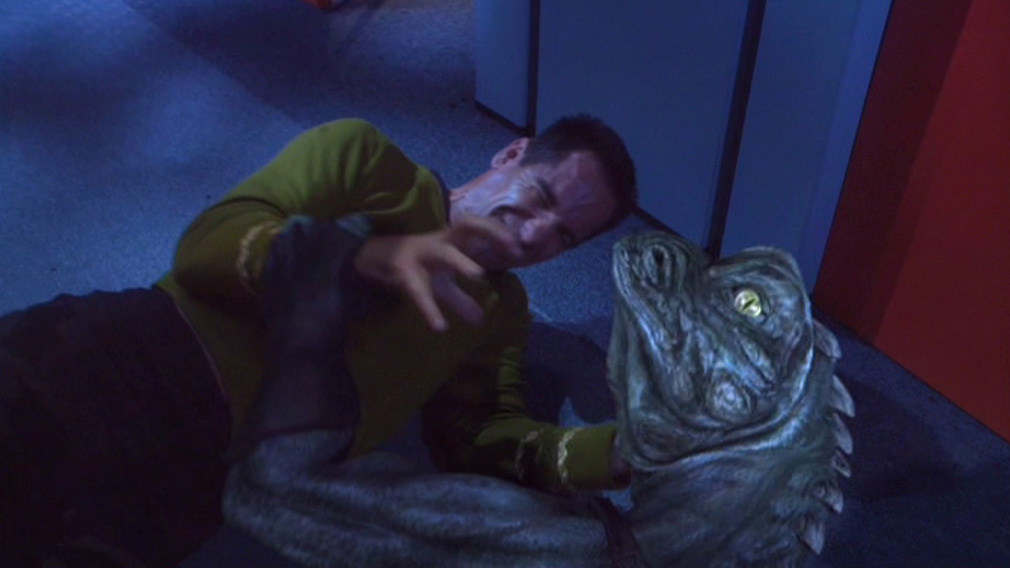
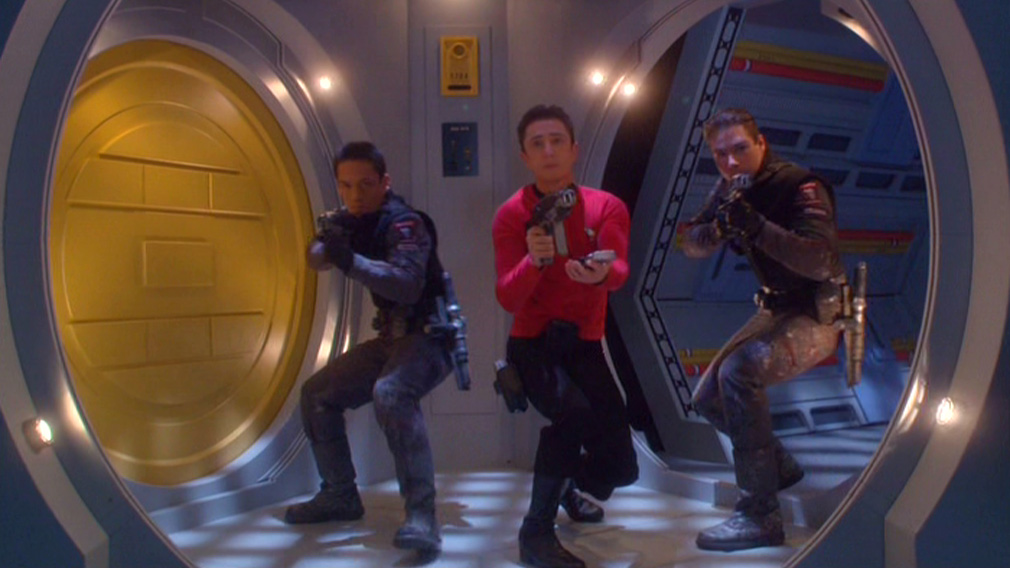
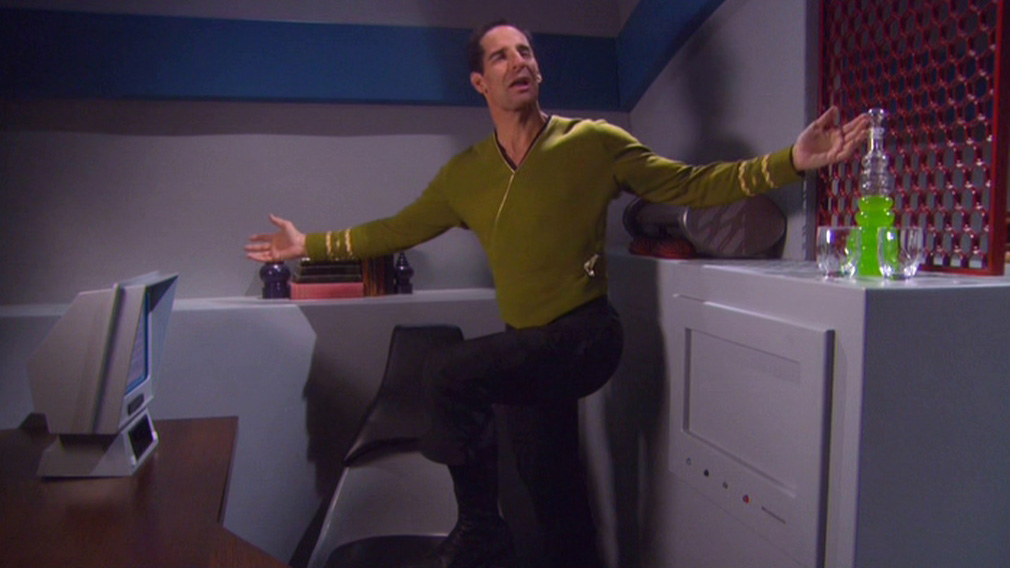
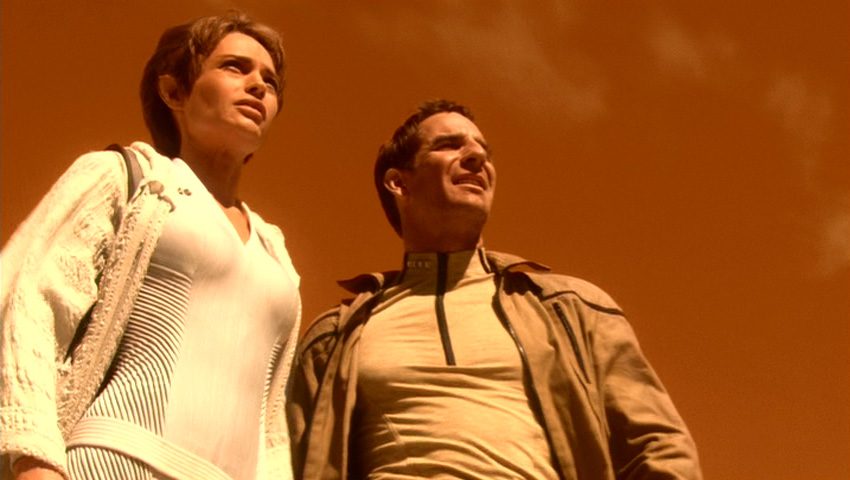
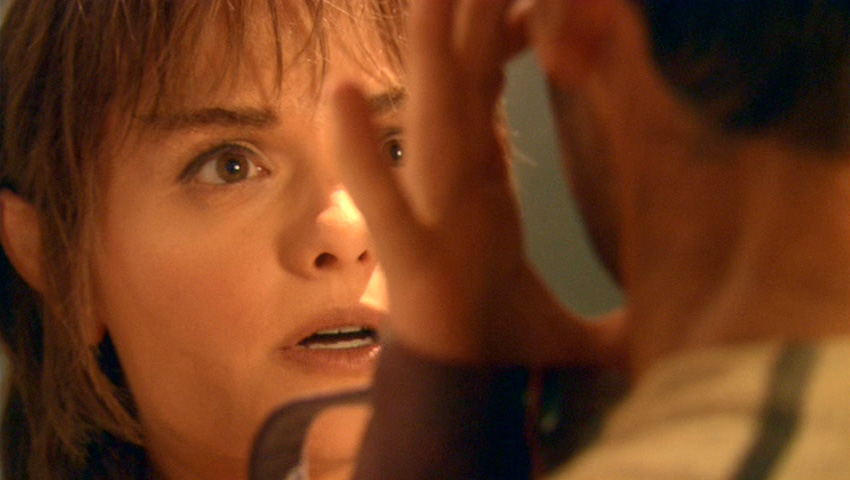
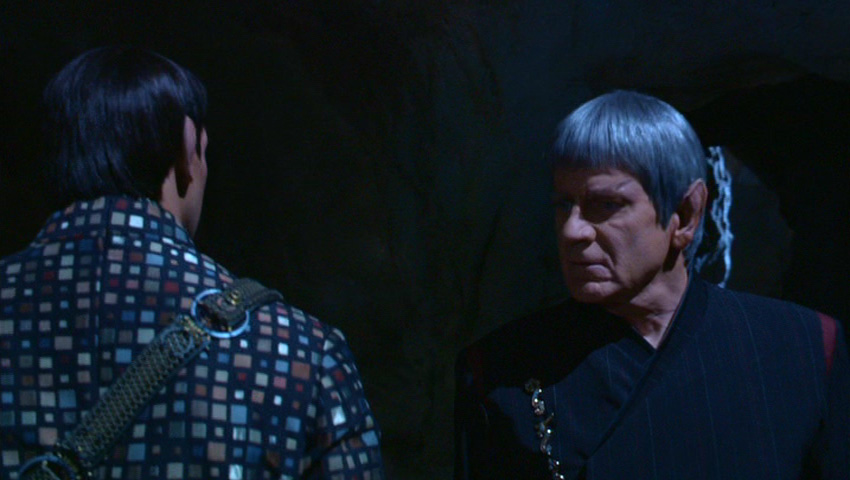
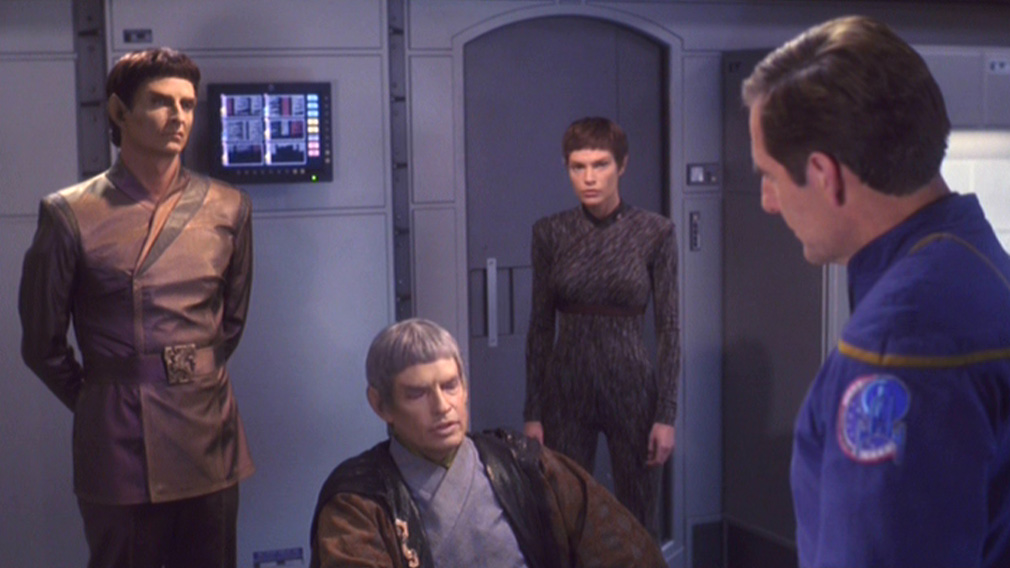
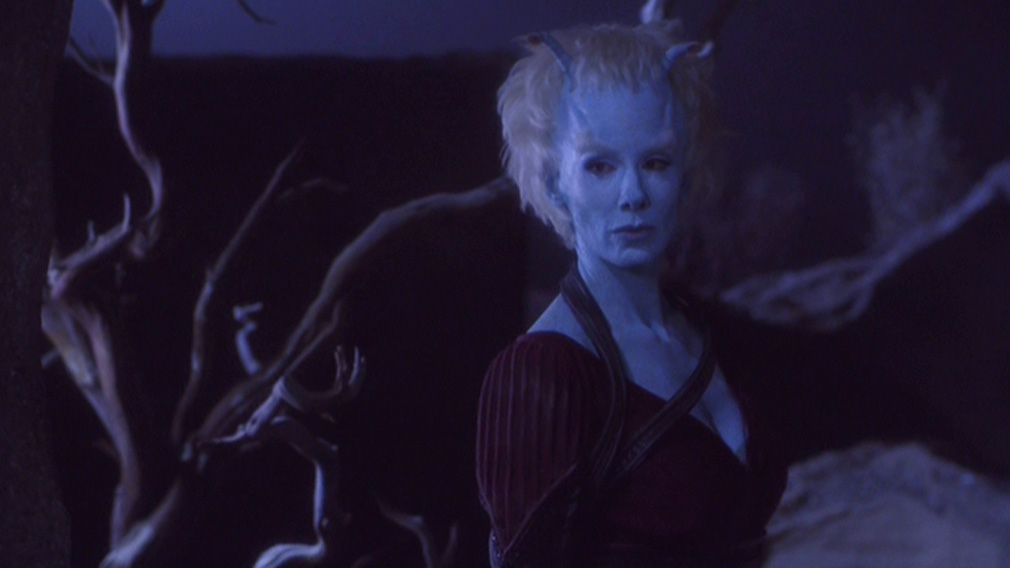
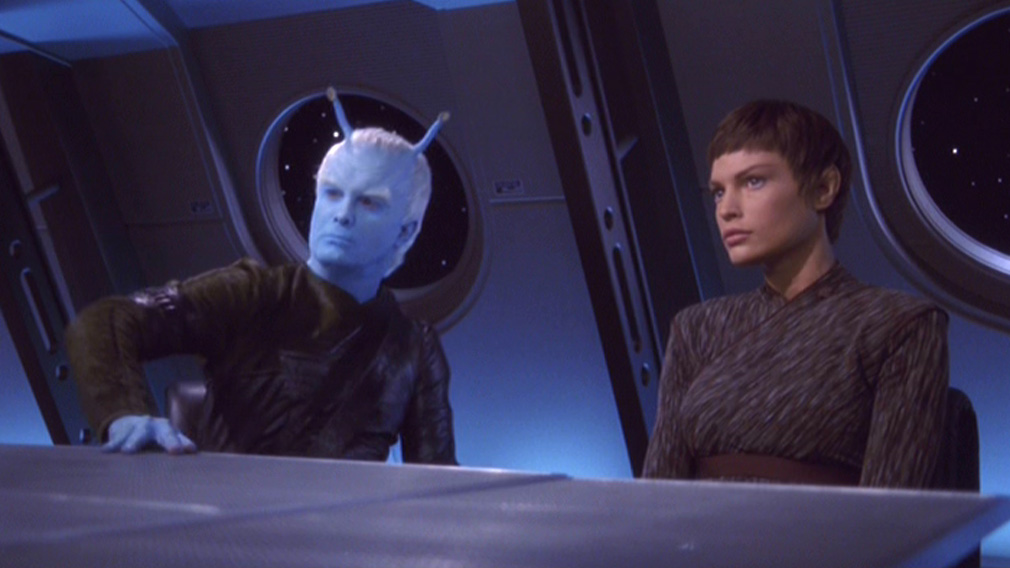
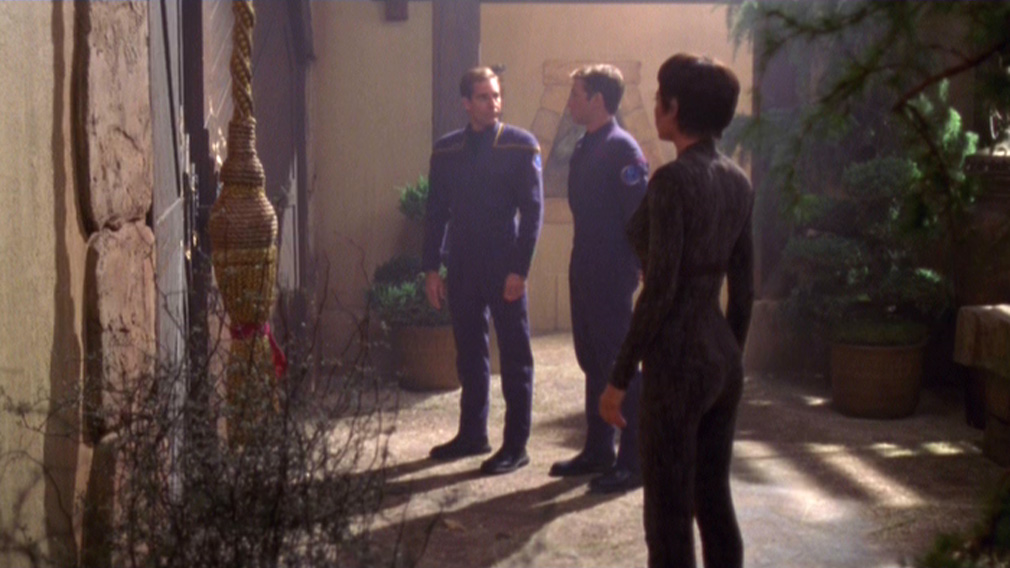
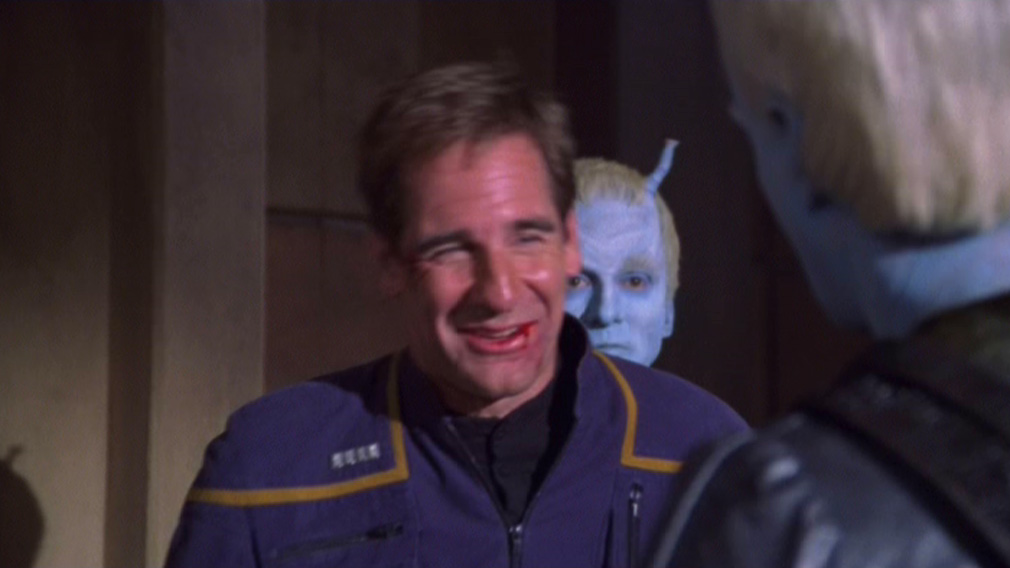
![Who wants to aimlessly mess with the balance of power? [Archer raises hand]](/wp-content/uploads/2016/02/theandorianincident_419.jpg)